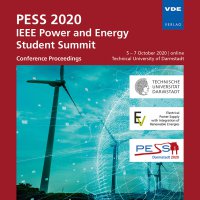Development of a Non-Residential Building Model for an Enhanced Identification and Utilization of Flexibilities in Smart Distribution Grids
Conference: PESS 2020 - IEEE Power and Energy Student Summit
10/05/2020 - 10/07/2020 at online
Proceedings: PESS 2020
Pages: 6Language: englishTyp: PDF
Authors:
Forchheim, Maximilian Hendrik; Wazifehdust, Mahjar; Cano-Tirado, David; Korotkiewicz, Kamil; Steinbusch, Philippe; Zdrallek, Markus (Institute of Power System Engineering, University of Wuppertal, Wuppertal, Germany)
Abstract:
Nowadays, renewable energy generation units are taking an important role in the distribution grids, due to their high volatility and resulting violations of the voltage and capacity limitations. Smart Grid systems provide a safe operation of the grid by using, among other possibilities, the flexibility of actuators to fix local violations in terms of voltage and current. This contribution focuses on the energy flexibility of non-residential buildings by analyzing their components in a Smart Grid Simulation Environment. In this context, the design of a thermal model for buildings and models of the electrical components are forming a basis for detailed investigations. The thermal model is achieved by an equivalent 3R2C electrical circuit. Electrical characteristics are simulated by modelling the heating, cooling and ventilation system. Components like photovoltaic systems, charging stations for electric vehicles and electrical energy storage systems were modeled in previous works and included. The accuracy of the model was verified on the basis of measurements in a real building. The results show that the model represents a non-residential building with a sufficient accuracy. Based on these models, the energy flexibility of a non-residential building can be determined and utilized by a proper controller in the context of a sophisticated Smart Distribution Grid system.


